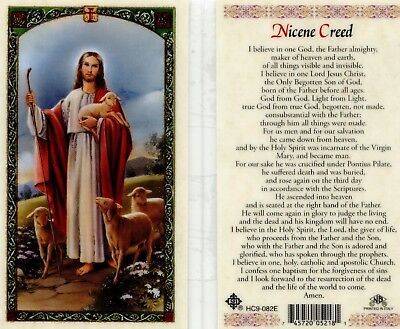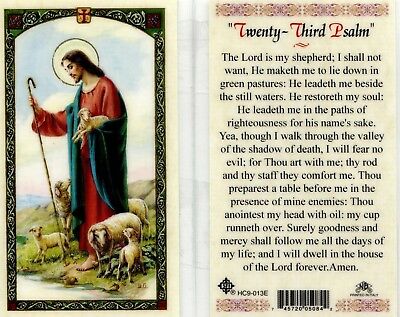-40%
Holy Card of Saint Bruno Plus a Large 1 3/4" Silver Oxidized Miraculous Medal
$ 2.9
- Description
- Size Guide
Description
Laminated Holy Card of Saint Bruno Plus a Large 1 3/4" Silver Oxidized Miraculous Medal.Plus you will get a brand new, large and beautifully detailed Miraculous Medal that is 1 3/4". This large version of one of the most popular medals is even more stunning than the others. The large size of this piece brings out every detail of its beautiful design. Two sided silver oxidized, and made in Italy. Measures 1 3/4" tall by 1" wide. Die-cast in Italy for exceptional detail, you will enjoy the beauty of Our Lady's medal made by the finest craftsmen in the world. Attached jump ring is included, and it is silver oxidized - that wonderful finish that only the Italians have perfected. This medal is also known as the Medal of the Immaculate Conception, created by St. Catherine Laboure following a vision of the Blessed Virgin Mary. This medal is believed to bring special intercessions on behalf of the Blessed Virgin Mary if worn with faith and devotion at the hour of death.
Bruno of Cologne was the founder of the Carthusian Order, he personally founded the order's first two communities. He was a celebrated teacher at Reims, and a close advisor of his former pupil, Pope Urban II. His feast day is October 6.
After his death, the Carthusians of Calabria, following a frequent custom of the Middle Ages, dispatched a roll-bearer, a servant of the community laden with a long roll of parchment, hung round his neck, who travelled through Italy, France, Germany, and England, stopping to announce the death of Bruno, and in return, the churches, communities, or chapters inscribed upon his roll, in prose or verse, the expression of their regrets, with promises of prayers. Many of these rolls have been preserved, but few are so extensive or so full of praise as that about St. Bruno. A hundred and seventy-eight witnesses, of whom many had known the deceased, celebrated the extent of his knowledge and the fruitfulness of his instruction. Strangers to him were above all struck by his great knowledge and talents. But his disciples praised his three chief virtues — his great spirit of prayer, extreme mortification, and devotion to the Blessed Virgin.
Both the churches built by him in the desert were dedicated to the Blessed Virgin: Our Lady of Casalibus in Dauphiné and Our Lady Della Torre in Calabria; faithful to his inspirations, the Carthusian Statutes proclaim the Mother of God the first and chief patron of all the houses of the order, whoever may be their particular patron. He is also the eponym for San Bruno Creek in California.
Bruno was buried in the little cemetery of the hermitage of Santa Maria. In 1513, his bones were discovered with the epitaph "Haec sunt ossa magistri Brunonis" (these are the bones of the master Bruno) over them. Since the Carthusian Order maintains a strict observance of humility, Saint Bruno was never formally canonized. He was not included in the Tridentine Calendar, but in the year 1623 Pope Gregory XV included him in the General Roman Calendar for celebration on 6 October.
Saint Bruno has long been regarded the patron saint of Calabria and one of the patron saints of Germany.
A writer as well as founder of his order, Saint Bruno composed commentaries on the Psalms and on the Epistles of Paul the Apostle. Two letters of his also remain, his profession of faith, and a short elegy on contempt for the world which shows that he cultivated poetry. St Bruno's Commentaries reveal that he knew a little Hebrew and Greek; he was familiar with the Church Fathers, especially Augustine of Hippo and Ambrose. "His style," said Dom Rivet, "is concise, clear, nervous and simple, and his Latin as good as could be expected of that century: it would be difficult to find a composition of this kind at once more solid and more luminous, more concise and clearer."
















